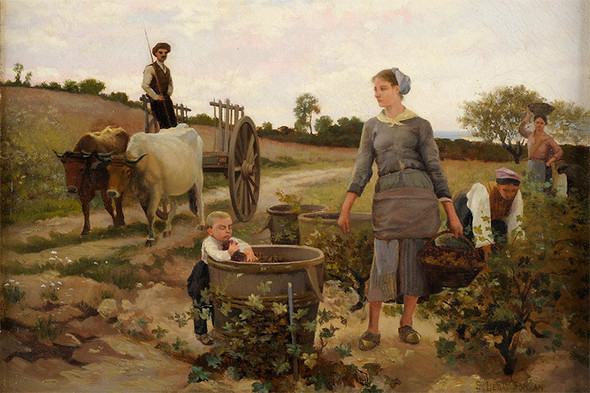You are new here? For the 1st part of this article click here.
Grape has been cultivated in Kőbánya since the Early Middle Ages, but the heydays of viticulture and wine making began with the expulsion of the Ottomans from Hungary. Records show that vineyards have been established in Óhegy from 1710 and in Újhegy from 1760. In his book Description of the Royal Free City of Pest, József Patacsich writes of the area in 1831 :
In an hour-ride distance on the East a hilly land can be seen which is named Kőbánya after the stones mines thereon: these hills are separated by a valley of several hundreds of feet in width: on the left Óhegy and on the right Újhegy emerge…on a large portion of this 960 acre land vine stocks are planted …
The arrival of wine merchants, attracted just as much by the vast cellars as by the good quality Vörösdinka wines of Kőbánya, has given a great spur. In the mid-1800s when several merchants had already settled in Kőbánya, the length of cellars is assumed to have reached 120 km according to some estimations. (One thing is for sure, a 33 km cellar labyrinth, mostly owned by Dreher Brewery, still exists.) Wine trading here benefited also from the fact that, contrary to the Buda and Csepel wines, no levy had to be paid for transporting wine to Pest from here.
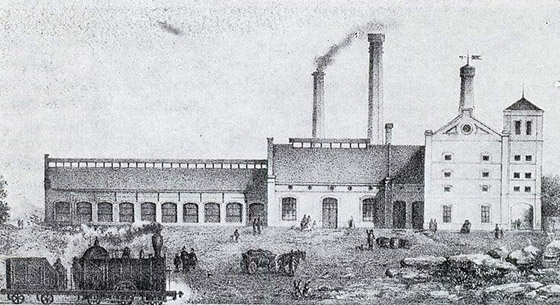
Past memories reflected in the present
Conti family had Italian ancestors and settled in Kőbánya as stonecutters at the beginning of the 1700s. The paterfamilias, Antal earned civil rights together with a larger wine estate on Óhegy in 1730. After he and his family survived one of the biggest plagues of the era, he decided to build a chapel in his vineyard. The still visible internal parts of the chapel and also the already faded decorations outside were cut by the builder, Lipót Antal Conti. The stunning baroque statues were also made by him. The chapel completed just in 2 years, until 1740 still stands in Kápolna square. Following numerous reconstructions and changes in ownership, it was reinstated to its original form and is now used as a temple of the Greek Catholic Church.
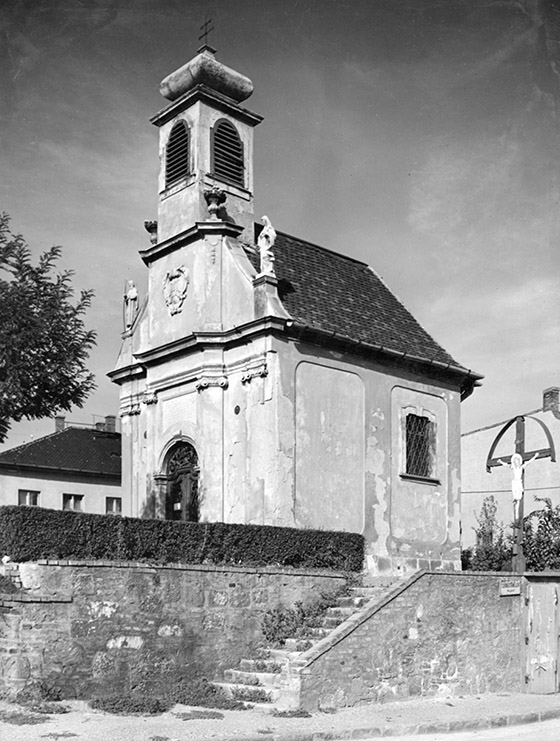
The baroque stone cross at the corner of Kada street and Sörgyár street also stands as a monument to these early years. (The corps is decorated with grape clusters.)
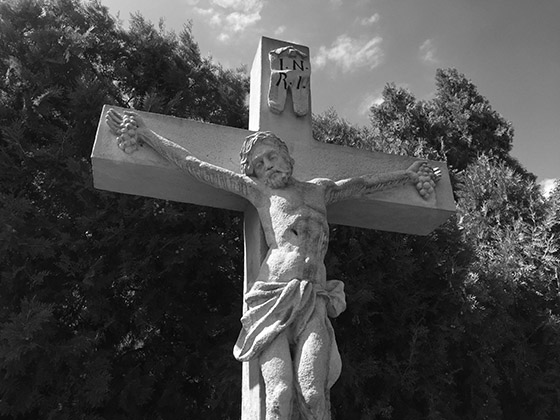
Wine estate owners have always complained a lot about damages caused by the soldiery. By the 1840s the situation became critical. Most of the damages were caused during artillery drills and another problem was posed by the fact that guarding the area was not taken care of. Some field guards had keeping an eye on the vineyards as a part time job and, in addition, they were also in charge of all the vineyards around today’s Városliget. Eventually the farmers decided, on the one hand, to become independent from other lands, for this reason independent “Kőbánya hegyközség” was founded and, on the other, to erect a building suitable for the protection of the estates. This building, the field guard’s tower can still be seen on top of Óhegy (Harmat street 31.). The Magistrates of Pest launched a tender in 1843 for the construction of the field guard’s tower and the adjacent residence building. One year later the building was completed. It was constructed by Ferenc Brein based on the layouts of Lőrinc Zofahl.
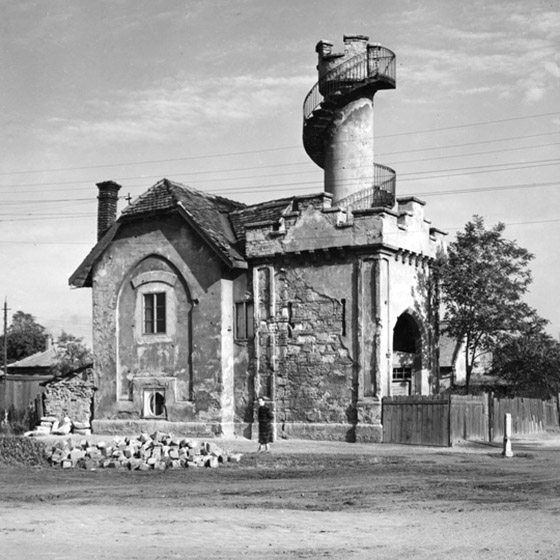
(The two-storey guard-house with a pitched roof is attached to the asymmetrically located, square-shaped building with battlements through a narrow passage. This is also the starting point of the stairs leading us to the lookout tower with elegant iron handrails along the way. The entrance door of the room upstairs is rich in wood carvings.) Today the building classified as national monument functions as a grille terrace and is even represented on Kőbánya’s coat of arms.
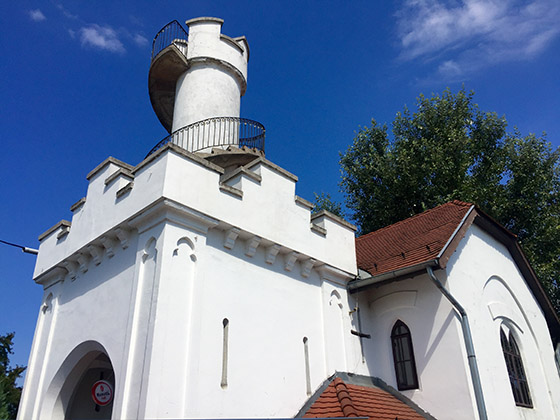
There is one more still existing building that deserves a mention: the old press house in Harmat street. It is of the same age as the field guard’s tower and is an important monument to the viniculture of Budapest. What bothers us is not the fact that today it is a residential house but that it is not classified as a national monument…
You can read more about Kőbánya in the third part of this article.



